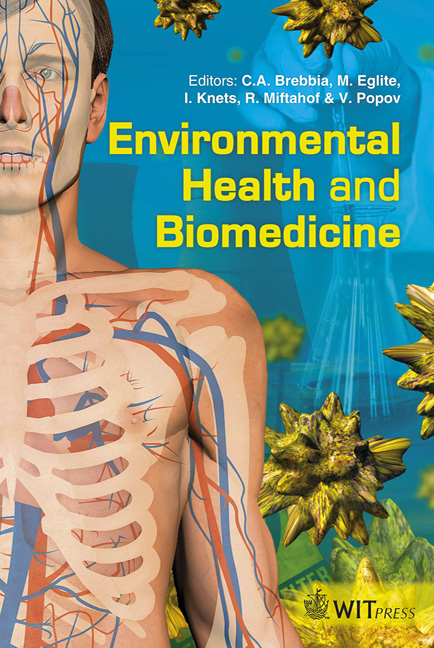Cell-based Bioassay For Compounds With Prooxidant Activity
Price
Free (open access)
Transaction
Volume
15
Pages
12
Page Range
171 - 182
Published
2011
Size
3,698 kb
Paper DOI
10.2495/EHR110161
Copyright
WIT Press
Author(s)
M. Thomas & L. Benov
Abstract
There is substantial evidence from epidemiological studies that the etiology of many ‘modern’ diseases is linked in part to environmental pollution. A number of observations suggest that an imbalance in cellular oxidants and antioxidants is a critical underlying factor. Many environmental pollutants, without being redoxactive and capable of causing oxidation in vitro, are able to shift the oxidant/antioxidant balance of the cells, thus triggering pathological responses. It is difficult to assess the biological impact of mixtures of environmental pollutants because of their complexity. We propose the parallel use of normal (parental) and genetically engineered superoxide dismutase (SOD)-deficient E. coli strains, as a tool for the detection of prooxidant-acting environmental pollutants. Doubling time, viability, mutation rate, and induction of antioxidant regulons are used as parameters to assess the pollutants’ toxicity and prooxidant action. SOD-deficient E. coli is highly sensitive to agents causing oxidative stress directly or indirectly. This sensitivity can be measured and is highly reproducible. Using E. coli is advantageous because the organism is well studied, can be stored at low temperatures for a very long time, and can be grown under standard, well-defined conditions. The parallel use of SOD-deficient mutants and SOD-proficient parents permits discrimination between compounds that exert general toxicity and compounds that act as prooxidants in vivo. The bioassay was used for fast screening of potentially hazardous chemicals with pro-oxidative action. Keywords: prooxidant, environmental pollutants, superoxide dismutasedeficient, oxidative stress, bioassay.
Keywords
prooxidant, environmental pollutants, superoxide dismutasedeficient, oxidative stress, bioassay





